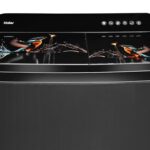At gas stations across America, you’ll notice different fuel options with varying price points.
Among these choices, ethanol-free gasoline often commands a premium price, leading many vehicle owners to wonder: is ethanol free gas better than standard ethanol-blended fuel, or is it simply an unnecessary expense?
This question requires a nuanced answer rather than a simple yes or no. Ethanol-free gasoline (often labeled as “pure gas,” “non-ethanol,” or “conventional gas”) offers several potential advantages, including improved fuel economy, longer storage life, and better compatibility with certain engines.
However, these benefits come with a significant price increase—typically 30 cents to a dollar more per gallon than regular ethanol-blended fuels.
For drivers of modern vehicles designed with ethanol compatibility in mind, the modest performance benefits may not justify the higher cost.
Meanwhile, owners of classic cars, small engines, boats, and seasonal equipment might find genuine value in choosing ethanol-free options, despite the premium price.
Is Ethanol Free Gas Better?

The right choice depends on understanding your specific needs: the type and age of your engine, how you use your vehicle or equipment, how long you store fuel, and your budget considerations.
By the end of this comprehensive guide, you’ll know to make an informed decision about whether ethanol-free gas is truly worth the extra cost for your particular situation.
What Is Ethanol-Free Gas?
To understand ethanol-free gasoline, we first need to understand what ethanol is and how it became a common component in modern fuels.
Ethanol is a renewable biofuel made primarily from corn in the United States. Chemically speaking, it’s an alcohol with the formula CH3CH2OH—the same type of alcohol found in alcoholic beverages. Despite being alcohol, ethanol is highly flammable and energy-dense, making it suitable as a fuel component.
Standard gasoline sold at most pumps today contains ethanol in various percentages:
- E10: Contains 10% ethanol and 90% gasoline (most common “regular” unleaded)
- E15: Contains 15% ethanol and 85% gasoline (sometimes labeled as “Regular 88”)
- E85: Contains between 51% and 85% ethanol (for flex-fuel vehicles only)
Ethanol-free gasoline is exactly what the name suggests—pure petroleum-based fuel without any ethanol added. This creates several key differences:
- Higher energy density: Pure gasoline contains approximately 30% more energy per gallon than ethanol, potentially resulting in better fuel economy.
- No water attraction: Unlike ethanol, which readily absorbs moisture from the air, pure gasoline doesn’t attract water, making it more stable during storage.
- Different chemical properties: Pure gasoline interacts differently with engine components, especially rubber and plastic parts in older fuel systems.
These differences make ethanol-free gas particularly valuable for certain applications, though they come with tradeoffs that we’ll explore throughout this guide.
Why Is Ethanol In Gasoline?
The widespread addition of ethanol to our nation’s fuel supply stems from specific government policies designed to address multiple national priorities. Understanding these reasons helps explain why ethanol-blended fuels have become standard while ethanol-free options remain available as premium alternatives.
In 2005, Congress passed the Energy Policy Act, which established the Renewable Fuel Standard (RFS). This program mandates that transportation fuel sold in the United States must contain a minimum volume of renewable fuels, including ethanol. The program was later expanded by the Energy Independence and Security Act of 2007.
The addition of ethanol to gasoline serves several important purposes:
- Energy independence: By replacing a portion of petroleum-based fuel with domestically produced ethanol, the U.S. reduces dependence on foreign oil imports.
- Agricultural support: The ethanol industry creates a significant market for American corn farmers, supporting rural economies and providing jobs.
- Environmental considerations: When accounting for its full lifecycle, ethanol can produce fewer greenhouse gas emissions than pure gasoline.
- Octane enhancement: Ethanol has a naturally high octane rating (about 113), which helps prevent engine knocking.
- Cost reduction: Due to agricultural subsidies and ethanol’s production scale, ethanol-blended fuels can sometimes cost less than pure gasoline.
However, these benefits come with certain trade-offs:
- Lower energy content: Ethanol contains about 30% less energy per volume than gasoline, leading to slightly reduced fuel economy (approximately 2-3% with E10).
- Water affinity: Ethanol attracts and absorbs water, which can lead to phase separation and potential engine problems in certain conditions.
- Material compatibility issues: Some older engine components weren’t designed for continuous exposure to ethanol.
These trade-offs explain why ethanol-free options remain available, albeit at a premium price, for applications where ethanol’s disadvantages outweigh its benefits.
How Do You Know If Gas Has Ethanol in It?
Determining whether the fuel you’re purchasing or already have contains ethanol is relatively straightforward. Here are the most reliable methods to identify ethanol content:
At the Gas Pump
Gas stations are required by law to clearly label the ethanol content of their fuels. Look for these indicators:
- Pump labels: Look for labels like “Contains up to 10% Ethanol,” “E10,” “E15,” or “E85.” These labels are typically displayed on the pump.
- “Ethanol-Free” designation: Stations selling pure gasoline often prominently advertise this fact with labels like “Ethanol-Free,” “Non-Ethanol,” or “Conventional Gas.”
- Price differential: Ethanol-free gas typically costs 30 cents to $1.00 more per gallon than regular ethanol-blended fuel, so a significantly higher price can be a clue.
- Specialty pumps: At stations offering both types, ethanol-free gas is often dispensed from separate, clearly marked pumps.
If you’re unsure, don’t hesitate to ask the station attendant about which pumps dispense ethanol-free fuel.
Testing Fuel You Already Have
If you have fuel in a container or vehicle and want to verify its ethanol content, you can perform a simple test:
- Get a clear testing container: A clear glass jar or specialized ethanol testing kit works best
- Mark the container: Make a mark about two inches from the bottom
- Add water: Fill to the mark with water
- Add gasoline: Add the gasoline you want to test until the container is about half full
- Seal and shake: Secure the lid and shake vigorously for about 30 seconds
- Let it settle: Allow the contents to separate for a few minutes
How to interpret the results:
- If the water level rises above your original mark, the fuel contains ethanol. This happens because ethanol will leave the gasoline and dissolve into the water, increasing the water volume.
- If the water level remains at your original mark, the fuel is ethanol-free.
This test works because ethanol has a chemical affinity for water that pure gasoline doesn’t share. When given the choice between mixing with water or remaining in gasoline, ethanol will move into the water phase.
Should You Put Gas Without Ethanol in Your Tank?
The decision to use ethanol-free gasoline depends on several factors related to your specific vehicle or equipment, usage patterns, and budget considerations. Here’s a detailed breakdown to help you determine when ethanol-free gas makes sense and when standard ethanol blends are likely sufficient:
Best Applications for Ethanol-Free Gas
- Older vehicles (especially pre-2001): Vehicles manufactured before widespread ethanol use often have fuel system components (rubber hoses, gaskets, seals) that weren’t designed for continuous exposure to ethanol.
- Classic and collector cars: Preserving vintage vehicles often justifies the premium for ethanol-free fuel.
- Two-stroke engines: Found in many chainsaws, leaf blowers, and some motorcycles, these engines mix oil with fuel and can be particularly sensitive to ethanol’s effects.
- Small engines: Lawnmowers, generators, pressure washers, and other small equipment typically benefit from ethanol-free fuel.
- Marine engines: Boats are especially vulnerable to water-related fuel problems that ethanol can exacerbate.
- Seasonal equipment: Vehicles or equipment that sit unused for months at a time benefit from the longer storage life of ethanol-free fuel.
- Aviation applications: Many small aircraft specifically require ethanol-free fuel.
When Regular Ethanol Blends Are Typically Fine
- Modern passenger vehicles (2001 and newer): These are designed with materials and systems compatible with ethanol blends.
- Daily drivers: Vehicles that burn through fuel regularly before water absorption becomes significant.
- Budget-conscious operation: When operating costs are a primary concern.
- Warm, dry climates: Where humidity-related fuel issues are less common.
- Flex-fuel vehicles: These are specifically designed to run on various ethanol blends.
Economic Considerations
Let’s examine the economic trade-off with a practical example:
| Fuel Type | Price Example | Fuel Economy | Cost to Drive 300 Miles |
|---|---|---|---|
| E10 (Regular) | $3.00/gallon | 30 MPG | $30.00 |
| Ethanol-Free | $3.50/gallon | 30.9 MPG | $33.98 |
As this example shows, even with the roughly 3% better fuel economy of ethanol-free gas, the higher purchase price typically makes it more expensive per mile driven for everyday use. This economic reality is why many drivers of modern vehicles opt for regular ethanol-blended fuel for daily driving.
The decision ultimately depends on weighing these economic considerations against the potential long-term benefits for your specific equipment.
Is Ethanol Free Gas Better for Your Engine?
The effects of ethanol-free gasoline on engine health and longevity vary significantly depending on the engine design, age, and usage patterns. Here’s a detailed look at how fuel choice impacts different aspects of engine health:
Potential Benefits for Engine Longevity
- Reduced moisture-related problems: Ethanol naturally attracts and absorbs water from the air (hygroscopic property). Over time, this can lead to phase separation—where the ethanol/water mixture separates from the gasoline and sinks to the bottom of the tank. This separated mixture can cause corrosion in fuel tanks, fuel lines, and carburetors. Ethanol-free gas eliminates this risk.
- Protection of vulnerable components: Ethanol can act as a solvent that deteriorates certain rubber hoses, gaskets, seals, and plastic parts, especially in systems not designed with ethanol compatibility in mind. Ethanol-free fuel is generally gentler on these components, potentially extending their service life.
- Prevention of deposit-related issues: While ethanol can help clean some engine deposits, it can also dislodge existing deposits that may then clog fuel filters, injectors, or carburetor jets. Ethanol-free gas avoids this particular issue.
- Carburetor preservation: Carburetors in older vehicles and small engines are particularly vulnerable to problems from ethanol-blended fuels, including gumming, corrosion, and clogged jets. Ethanol-free fuel generally causes fewer issues in carbureted systems.
Engine Types Most Affected by Ethanol
The benefits of ethanol-free gas are most noticeable in these engine categories:
- Carbureted engines: These older fuel delivery systems are more sensitive to fuel quality and composition changes than modern fuel injection.
- Two-stroke engines: Found in many small equipment applications, these engines mix oil and fuel and can be particularly sensitive to ethanol’s effects on this mixture.
- Engines with older fuel system components: Vehicles and equipment manufactured before ethanol blends became common (roughly pre-2001) often used materials that degrade more quickly when exposed to ethanol.
- Marine engines: The combination of ethanol’s water attraction and the humid marine environment makes boats especially vulnerable to ethanol-related issues.
- Rarely used engines: Equipment that sits for extended periods between uses faces increased risk of moisture-related problems when filled with ethanol-blended fuels.
Modern Engine Compatibility
For most modern vehicles with fuel injection systems (particularly those built after 2001), the benefits of ethanol-free gas for engine health are much less significant:
- Updated materials: Modern vehicles use ethanol-compatible materials for fuel lines, gaskets, seals, and other components.
- Sophisticated fuel management: Electronic fuel injection systems can adapt to different fuel compositions automatically.
- Enhanced filtration: Improved fuel filter designs help protect against potential contaminants.
- Regular fuel turnover: Daily drivers typically use fuel before significant water absorption occurs.
For these modern vehicles, the engine health benefits of ethanol-free gas, while real, are often too modest to justify the premium price for most drivers.
Is Gas Without Ethanol Better for Performance?
When it comes to vehicle performance, the effects of ethanol content can be measurable in certain applications. Here’s how ethanol content impacts various performance aspects:
Power and Energy Content
The fundamental difference stems from ethanol’s lower energy density:
- Ethanol contains approximately 30% less energy per volume than gasoline
- E10 fuel (10% ethanol) contains about 3% less energy than pure gasoline
- E15 fuel (15% ethanol) contains about 4.5% less energy than pure gasoline
This energy difference can manifest as:
- Horsepower differences: In non-optimized engines, ethanol-free gas might provide a small increase in maximum horsepower (typically 1-3%).
- Torque delivery: Some engines may deliver slightly more torque when running on ethanol-free fuel.
- Throttle response: Some drivers report more immediate response when accelerating with ethanol-free fuel, particularly in carbureted engines.
Fuel Economy
The energy content difference directly affects fuel economy:
- Increased MPG: Vehicles typically get 2-3% better mileage with ethanol-free gas compared to E10.
- Extended range: A full tank of ethanol-free gas will take you farther than the same tank of ethanol-blended fuel.
- Consistency: Fuel economy may be more consistent with ethanol-free gas across varying conditions.
However, as our cost analysis showed earlier, the higher price per gallon of ethanol-free gas typically outweighs these fuel economy benefits from a purely economic standpoint.
Engine Behavior
Users of ethanol-free gas sometimes report these performance characteristics:
- Smoother idle: Particularly noticeable in carbureted engines and some older fuel-injected engines.
- More consistent performance: Less variation in performance under different humidity and temperature conditions.
- Improved cold-weather starting: Ethanol can make cold starting more difficult in some engines; ethanol-free gas may improve cold-start reliability.
- Reduced hesitation: Some engines experience less hesitation or stumbling when running on ethanol-free fuel.
Performance Applications
For certain performance-oriented vehicles and applications:
- Classic performance cars: Vintage muscle cars and other performance classics often run better on ethanol-free fuel that matches what they were designed to use.
- Racing applications: Some racing teams prefer ethanol-free fuel for its higher energy content and consistent performance.
- Small performance engines: Motorcycles, ATVs, and similar recreational vehicles may show more noticeable performance improvements with ethanol-free fuel.
It’s worth noting that some modern high-performance vehicles are designed to take advantage of ethanol’s higher octane rating and cooling properties. For these vehicles, manufacturer recommendations should guide your fuel choice.
Will Gas Without Ethanol Hurt My Car?
A common concern among drivers is whether switching to ethanol-free gas might somehow damage their vehicle. This fear is largely unfounded. Here’s what you need to know about the safety of using ethanol-free gasoline:
Safety for Modern Vehicles
- No risk of damage: Ethanol-free gasoline will not harm engines designed for ethanol blends. If your vehicle can run on E10 (which nearly all modern vehicles can), it can safely run on ethanol-free gas.
- Compatible with all gasoline vehicles: Any vehicle designed to run on gasoline can operate on ethanol-free fuel without modification or risk.
- No adaptation period needed: Unlike switching to higher ethanol blends, which might require adjustment, switching to ethanol-free gas requires no transition period or special considerations.
- Warranty preservation: Using ethanol-free gasoline will not void your vehicle warranty. Warranties typically require using fuel that meets minimum octane requirements but don’t mandate ethanol content.
Manufacturer Recommendations
While ethanol-free gas is safe for virtually all gasoline engines, it’s always wise to consult your owner’s manual for specific recommendations:
- Required octane rating: Regardless of ethanol content, always use the minimum octane rating recommended by the manufacturer (typically 87 for regular, 89-90 for mid-grade, and 91-93 for premium).
- Flex-fuel vehicles: These can run on any gasoline from E0 to E85, so ethanol-free gas is perfectly acceptable.
- Direct-injection engines: Modern direct-injection engines benefit from the cleaning effect of detergent additives, which are present in quality fuels regardless of ethanol content.
The bottom line is that ethanol-free gasoline is universally safe for gasoline engines. The only exceptions might be engines specifically designed to run exclusively on high-ethanol blends, which are extremely rare in passenger vehicles.
How Long Will Gas Without Ethanol Last?
One of the most significant advantages of ethanol-free gasoline is its superior shelf life compared to ethanol-blended fuels. This makes it particularly valuable for seasonal equipment, emergency generators, and vehicles that aren’t driven regularly.
Storage Duration Comparison
Under typical storage conditions:
- Ethanol-blended gasoline (E10): Generally begins to degrade within 2-3 months
- Ethanol-free gasoline: Typically remains stable for 6 months or longer
- Stabilized ethanol-free gas: Can last up to 2 years or more with proper fuel stabilizers
Why the Difference in Shelf Life?
The primary reason ethanol-free gas lasts longer is ethanol’s hygroscopic nature—its tendency to attract and absorb water from the air. This water absorption leads to several problems that reduce shelf life:
- Phase separation: When enough water is absorbed (typically less than 1% by volume), the ethanol/water mixture separates from the gasoline and sinks to the bottom of the tank.
- Increased oxidation: Water accelerates the oxidation process that leads to gum and varnish formation in the fuel.
- Corrosion risk: The separated water/ethanol layer is highly corrosive to metal components.
- Microbial growth: Water creates an environment where bacteria and fungi can grow in the fuel tank.
Without ethanol, pure gasoline resists water absorption and remains stable significantly longer.
Proper Storage Practices
To maximize the shelf life of any fuel, follow these guidelines:
- Use appropriate containers: Store fuel only in approved containers designed specifically for gasoline.
- Keep containers tightly sealed: Minimize air exposure to prevent both evaporation and water absorption.
- Store in temperature-stable environments: Avoid locations with extreme temperature fluctuations or direct sunlight.
- Fill containers nearly full: Leave a small air gap for expansion but minimize the air space to reduce oxidation.
- Consider fuel stabilizers: Products like Sta-Bil, Sea Foam, or PRI-G can significantly extend shelf life.
For vehicles or equipment that will sit unused for extended periods, ethanol-free gas with a quality fuel stabilizer provides the best protection against fuel-related problems during storage.
Which Gas Brand Has Least Ethanol?
When searching for ethanol-free gasoline, understanding that ethanol content is regulated and clearly labeled is crucial. Here’s what you need to know about finding fuel with the least ethanol:
Understanding Ethanol Labeling Standards
- E0: Pure gasoline with no ethanol (ethanol-free)
- E10: Contains 10% ethanol (the standard for most “regular” gasoline)
- E15: Contains 15% ethanol (often labeled as “Regular 88”)
- E85: Contains 51-85% ethanol (for flex-fuel vehicles only)
These designations are standardized and regulated, meaning an E10 from one brand contains the same percentage of ethanol as E10 from another brand. The difference lies in availability, not variation within these categories.
Where to Find Ethanol-Free Gas
Rather than focusing on specific brands, consider these sources for ethanol-free fuel:
- Online fuel finders: Websites like Pure-Gas.org maintain databases of stations offering ethanol-free options.
- Marina gas stations: Facilities catering to boats frequently offer ethanol-free gas.
- Airport fueling stations: Some smaller airports sell mogas (motor gasoline for small aircraft), which is ethanol-free.
- Rural and farming communities: Areas with high concentrations of small equipment often have better ethanol-free availability.
- Higher-end gas stations: Some premium fuel retailers make a point of offering ethanol-free options.
- Specialty fuel retailers: Stores catering to lawn equipment, motorcycles, or boating often sell ethanol-free fuel in containers.
Common Terms for Ethanol-Free Gasoline
Look for these marketing terms that often indicate ethanol-free options:
- Pure gas
- Clear gas
- Non-ethanol
- Conventional gasoline
- Recreational fuel
- Marine fuel
- TruFuel (a brand of packaged ethanol-free fuel)
Remember that regardless of brand or marketing terms, the pump should indicate whether the fuel contains ethanol. When in doubt, ask the station attendant for clarification.
Is Ethanol Free Gas Worth It?
After examining all aspects of ethanol-free gasoline, we arrive at the fundamental question: is the premium price worth paying? The answer depends on your specific circumstances.
Cost-Benefit Analysis by Application
| Vehicle/Equipment Type | Benefit Level | Worth the Premium? |
|---|---|---|
| Modern daily driver (2001+) | Minimal | Generally no |
| Classic car/vintage vehicle | Substantial | Yes |
| Boat/marine engine | Significant | Yes |
| Lawn equipment/small engines | Significant | Yes |
| Seasonal recreational vehicles | Substantial | Yes |
| High-performance specialty vehicle | Moderate to high | Often yes |
When the Premium Price Makes Sense
- For carbureted engines: Carburetors are particularly vulnerable to problems from ethanol-blended fuels.
- For long-term storage: The extended shelf life justifies the premium when equipment will sit unused for extended periods.
- For older fuel systems: Vehicles with rubber and plastic components not designed for ethanol exposure.
- For problematic equipment: If you’ve experienced ethanol-related issues with a particular engine.
- For critical reliability: When failure would create significant problems (emergency generators, remote equipment).
- For marine applications: Boats face unique challenges with fuel due to their operating environment.
When Regular E10 is the Smarter Choice
- For modern daily drivers: Vehicles with fuel injection that are driven regularly.
- For budget-conscious operation: When operating costs are a primary concern.
- For vehicles with frequent fill-ups: Fuel that doesn’t sit long enough to absorb significant moisture.
- For environmentally conscious drivers: Who want to support renewable fuel initiatives.
- For vehicles with manufacturer E10 recommendations: Some newer vehicles are optimized for E10 blends.
A Strategic Compromise
Many equipment owners find that a strategic approach offers the best balance:
- Use ethanol-blended fuel for regular, everyday driving in modern vehicles
- Reserve ethanol-free gas for sensitive applications like small engines and marine equipment
- Use ethanol-free fuel with stabilizer for the final fill-up before seasonal storage
- Consider ethanol-free for very cold weather operation when starting reliability is critical
This targeted approach provides the benefits of ethanol-free gas where they matter most while avoiding unnecessary premium costs for everyday use.
FAQs
- Will mixing ethanol-free and ethanol-blended gas harm my engine?
No, mixing is completely safe. You can freely switch between ethanol-free and ethanol-blended fuels or mix them in your tank without any risk to your engine. The resulting mixture will simply have an ethanol percentage somewhere between the two original fuels.
- Why is ethanol-free gas more expensive?
Ethanol-free gas costs more for several reasons: it doesn’t benefit from the government subsidies that ethanol-blended fuels receive, it’s produced in smaller quantities creating economies of scale issues, and it’s marketed as a premium product. The price difference typically ranges from $.30 to $1.00 per gallon.
- Is premium gas the same as ethanol-free gas?
No, they’re different characteristics. “Premium” refers to the octane rating (typically 91-93), while “ethanol-free” refers to the absence of ethanol. Some premium gas contains ethanol, and some ethanol-free gas comes in regular octane ratings. You need to check the pump labeling for both characteristics separately.
- Will ethanol-free gas improve my fuel economy?
Yes, slightly. Most vehicles see a 2-3% improvement in fuel economy with ethanol-free gas compared to E10 blends. This is because ethanol contains about 30% less energy than gasoline. However, the higher cost per gallon typically outweighs this efficiency gain from a purely economic perspective.
- Will using ethanol-free gas void my warranty?
No, using ethanol-free gas will not void your vehicle warranty. Warranties generally require that you use fuel that meets minimum octane requirements, but they don’t mandate ethanol content. Ethanol-free gas is less aggressive than what most modern vehicles are designed to handle.
Also Check:
Conclusion:
After weighing all the factors, the question “Is ethanol-free gas better?” doesn’t have a one-size-fits-all answer. The right choice depends heavily on your specific situation.
For most modern daily drivers, the modest performance benefits of ethanol-free gas rarely justify its premium price. These vehicles are designed to function well with standard E10 blends, and many drivers will never notice a difference worth paying 30 cents to a dollar more per gallon.
However, for certain applications, ethanol-free gas provides clear and meaningful advantages:
- Small engines in lawn equipment, chainsaws, and power tools
- Boats and marine engines
- Classic and vintage vehicles
- Seasonal equipment that sits unused for extended periods
- Vehicles in long-term storage
In these cases, the benefits of ethanol-free gas—including extended storage life, reduced risk of moisture-related problems, and protection of vulnerable fuel system components—can outweigh the higher cost.
The wisest approach for many vehicle and equipment owners is a balanced strategy: use standard ethanol-blended fuels for modern daily drivers and reserve ethanol-free gas for applications where its benefits truly matter.
This pragmatic approach provides the best combination of economy and protection across your various engines and equipment.
By understanding the real differences between these fuel types, you can make informed decisions about when ethanol-free gas is a worthwhile investment and when it’s simply an unnecessary expense—ensuring you get the best performance, reliability, and value from all your vehicles and equipment.










